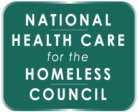In substance abuse treatment, a gap exists between scientific research and clinical practice that is not common to other fields of medicine. This gap between research and practice is a concern shared in the Health Care for the Homeless (HCH) field as well, a concern which led to the formation of the “Translating Research Into Practice” subcommittee. This report represents the subcommittee’s first endeavor, a summary of peer-reviewed published literature on substance abuse treatment and homeless persons. The intent of the report is to enable the subcommittee and practitioners in the field to identify existing discrepancies between research and HCH practice.
Substance abuse is both a precipitating factor and a consequence of homelessness. Prevalence estimates of substance use among homeless individuals are approximately 20-35 percent; as many as 10-20 percent are “dually diagnosed” with an additional mental health diagnosis. In the United States, less than one-quarter of individuals in need of substance abuse treatment actually receive it; structural and interpersonal barriers to accessing substance abuse treatment are exacerbated by the realities of homelessness. Thus, homeless persons have a higher need for treatment than in the housed population, yet can expect to face more difficulties in accessing the help they need.
An understanding of often-contentious underlying issues and their associated assumptions is helpful in interpreting this body of published research. The issues introduced and reviewed here, along with specific implications, include: which basic research questions and designs are most apt to be funded; some fundamental differences in treatment philosophies which may affect programmatic decisions; the issue of mandating treatment for a vulnerable population; and how “success” is defined in programs and in research.
